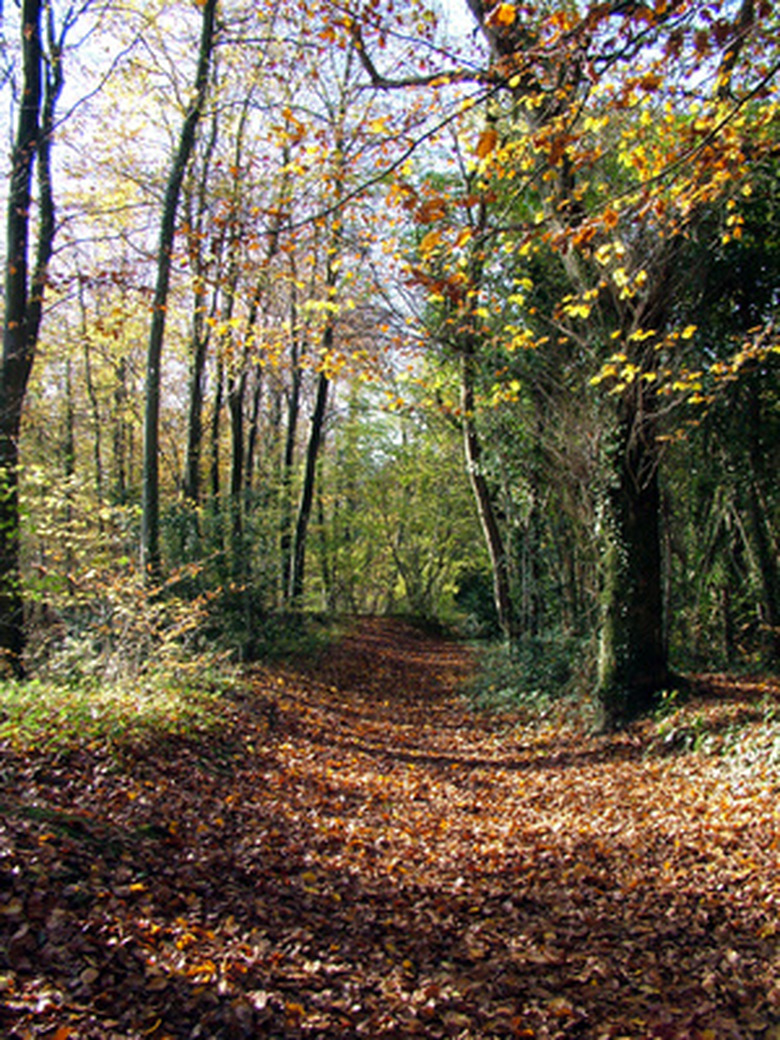Features Of A Forest Ecosystem
Forests are one of the major land biomes, along with grassland, desert and tundra. Forests cover 30 percent of Earth's surface and are home to 80 percent of the world's terrestrial biodiversity. Forests are found on all continents except Antarctica. They provide many important products and services for humans.
The characteristic features of forest ecosystems include vegetation dominated by large tree species. Many different types of forest exist, but they can all generally fall into four groups: boreal, temperate, wet tropical and dry tropical.
Boreal Forests: Subpolar Regions
Boreal Forests: Subpolar Regions
Boreal forests grow in subpolar regions and cover extensive areas of North America, Asia and Europe. They are characterized by coniferous tree species, low biodiversity and a simple forest structure, often exhibiting just two levels – the canopy and ground layer.
Tree species associated with boreal forests include black and white spruce, quaking aspen, balsam fir and lodgepole pine. Creatures that inhabit boreal forests include rodents such as mice, voles and squirrels; large herbivores, including moose, reindeer and caribou; and predators such as lynx, wolves and wolverines. There are also birds, including woodpeckers, crossbills, ptarmigan and snowy owls.
Temperate Forests: The Midlatitudes
Temperate Forests: The Midlatitudes
Temperate forests occur at midlatitudes in the Northern and Southern Hemispheres and exist in North and South America, Asia, Europe, Africa and Oceania. One way temperate forests differ from boreal forests is that they have more deciduous tree species.
Deciduous trees have broad leaves that capture more sunlight than the needlelike leaves of conifer species. Going into the cold, nongrowing winter season, deciduous trees shed their leaves to conserve energy. Before letting leaves fall, trees absorb useful compounds from the leaves and excrete waste products into them, which creates colorful displays of autumn foliage.
Deciduous trees include oaks, beeches, chestnuts and maples. Animals found in temperate forests include deer, bears and wild boar.
Tropical Forests: Equatorial Regions
Tropical Forests: Equatorial Regions
Tropical forests occur between the Tropic of Cancer and the Tropic of Capricorn, in large areas of South and Central America, Africa, Asia and Oceania. Tropical forests come in two types: wet and dry.
Wet tropical forests experience significant rainfall throughout the year and do not change significantly from season to season. Dry tropical forests experience periods of little rain during which many tree species will shed their leaves to conserve water; other species may have adaptations such as thick, waxy layers on their leaves.
Animals that live in tropical forests include jaguars, tapirs and anacondas in South America, elephants, tigers and orangutans in Southeast Asia, and gorillas, chimpanzees and leopards in Africa.
Layers of the Forest
Layers of the Forest
The structure of a forest ecosystem contains several different levels, or strata, each with its own species, communities and ecosystems.
The forest floor, or the ground layer, consists of the soil, leaf litter, and low-growing plants, mosses and lichens. This layer is home to lizards and snakes, and invertebrates such as spiders, millipedes and ants. It is also home to large, ground-dwelling animals, including deer, peccaries and elk.
The understory layer consists of shrubs and small trees and may be very sparse or nonexistent in some forest types. This layer is home to smaller animals such as insects, frogs, rodents and bats.
The canopy layer includes the trunk, branches and leaves of the trees. This level is the most productive of the forest ecosystem, as it receives the most sunlight. The canopy layer can often be split into several substrata depending on the type of forest and the different ecological communities within the canopy.
In tropical forests, some trees may grow significantly higher than the average canopy height, creating a new "emergent" layer with its own unique forest habitat characteristics. Creatures that inhabit the canopy layer include birds, monkeys and squirrels.
Forest Products and Services
Forest Products and Services
Forests provide a wide variety of products and services, and up to 1.6 billion people around the world directly depend on forests in order to make a living. Forests can supply foods such as berries, nuts, fruit, honey and game. Timber, bamboo and other materials from forest plants are used in construction and furniture making and as a source of fuel.
Some soil plants and soil organisms contain compounds that have led to the development of antibiotics and other medicines. Many plants from the Amazon Rainforest have uses in modern medicine. Forest ecosystem processes also help regulate carbon and water cycles and foster biodiversity.
References
Cite This Article
MLA
Michelle, Meg. "Features Of A Forest Ecosystem" sciencing.com, https://www.sciencing.com/features-of-a-forest-ecosystem-13428998/. 30 September 2021.
APA
Michelle, Meg. (2021, September 30). Features Of A Forest Ecosystem. sciencing.com. Retrieved from https://www.sciencing.com/features-of-a-forest-ecosystem-13428998/
Chicago
Michelle, Meg. Features Of A Forest Ecosystem last modified August 30, 2022. https://www.sciencing.com/features-of-a-forest-ecosystem-13428998/
